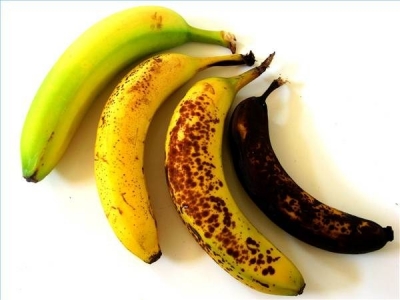 Ripening may be regarded as a special case of sequence. During ripening, a number of enzyme-assisted reactions take place inside the fruits. The list includes softening of tissues, hydrolysis, changes in pigmentation, flavour and respiration rate, and conversion of carbohydrates and organic acids into fruit sugars. These changes are induced by ethylene which is also called as ripening hormone.
Ripening may be regarded as a special case of sequence. During ripening, a number of enzyme-assisted reactions take place inside the fruits. The list includes softening of tissues, hydrolysis, changes in pigmentation, flavour and respiration rate, and conversion of carbohydrates and organic acids into fruit sugars. These changes are induced by ethylene which is also called as ripening hormone.
It has been found that during ripening, ethylene production goes up. In fleshly fruits like mango significant amount of ethylene may be present some time before ripening, but the fruit’s response to ethylene is inhibited till the fruit is harvested. In banana, a presumably effective ethylene concentration may be present in the unripe fruit, but the fruit is insensitive to that concentration at that stage. Only as it matures, it becomes sensitive and begins to ripen.
Generally, an ethylene-forming mechanism and breaking of the insensitiveness to ethylene are attained only fruits reach a certain physiological age.
When unripe fruits are kept inside a sack or tin of rice, the time needed to attain this critical physiological age is shortened. It could be that the fruit is totally cut off from light which promotes yellowing. (It is not known whether there is any increase in the temperature of the fruit.) The ethylene produced in the fruit also diffuses rapidly through the fruit’s tissues.
If the fruits are placed in an airy place, this ethylene may be immediately lost in the air. When confined in rice or sack, its flow is restricted and there is always a layer of ethylene surrounding the fruit which accelerates ripening.



 “Temperature changes can delay or hasten the ripening of banana. Banana is a tropical fruit, adapted to ripen quickly at a certain stage of its development and at a particular temperature and humidity. It continues to ripen after harvest, with more and more of its starch converted into sugars by the action of enzymes. When harvested, a banana contains about 20 per cent starch and only 1 percent sugar. By the time the fruit is ripe, the proportions are reversed.
“Temperature changes can delay or hasten the ripening of banana. Banana is a tropical fruit, adapted to ripen quickly at a certain stage of its development and at a particular temperature and humidity. It continues to ripen after harvest, with more and more of its starch converted into sugars by the action of enzymes. When harvested, a banana contains about 20 per cent starch and only 1 percent sugar. By the time the fruit is ripe, the proportions are reversed.

 Apple contains an enzyme known as polyphenol oxidase (it is a copper containing enzyme).
Apple contains an enzyme known as polyphenol oxidase (it is a copper containing enzyme).


